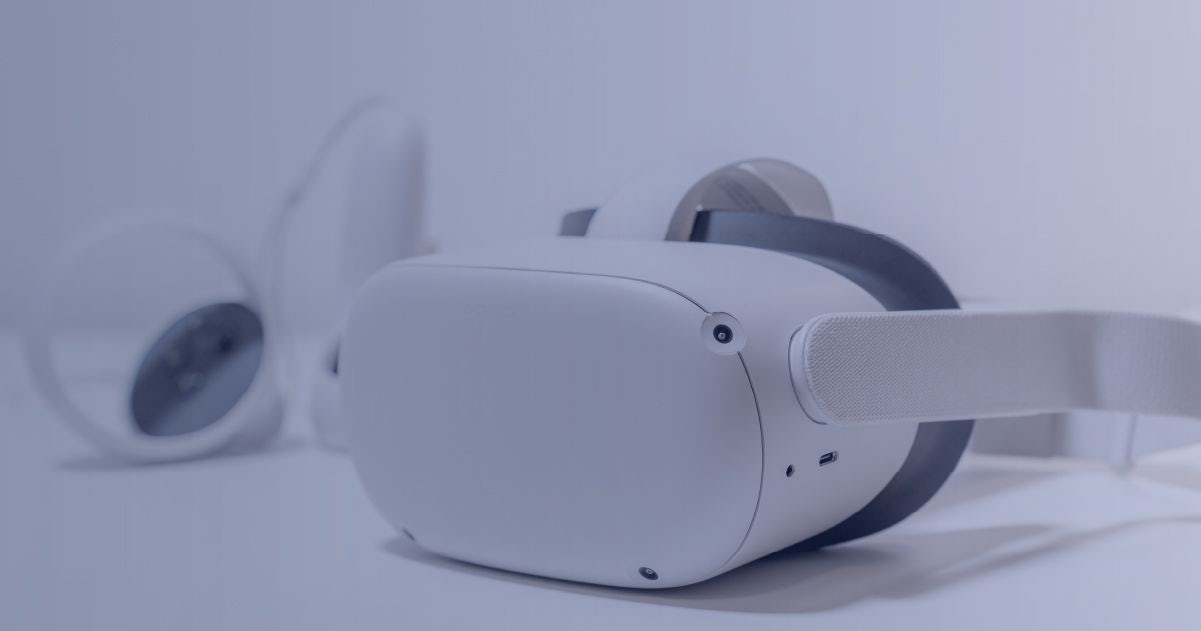Healthcare is at the leading edge of technological innovation. Medical organizations and providers are now adopting cutting-edge technologies such as machine learning, artificial intelligence, computer vision, and analytics solutions.
One of the most exciting areas of innovation in healthcare is related to Augmented Reality (AR). The expected global value of AR and VR (Virtual Reality) healthcare markets is expected to reach a smashing $5.1 billion by 2025.
Read this article to see how the healthcare industry is using Augmented Reality and discover its most practical use cases.
What is Augmented Reality?
Augmented Reality (AR) and Virtual Reality (VR) are two powerful trends in the tech industry today. They are present across various industries, starting from entertainment and ending with education.
But what exactly is Augmented Reality, and how does it differ from Virtual Reality? The two often get confused, so let’s start by explaining the differences between them.
- Augmented Reality (AR) uses digital technologies to create and integrate virtual objects in the real environment. In its essence, AR is based on existing environments. It projects digital information onto them while allowing users to still see the real world.
- Virtual Reality (VR) uses digital technologies to create entirely simulated environments displayed to users via devices that offer total immersion.
The most well-known examples of VR devices are Google Cardboard, HTC Vive, and Oculus Rift. Augmented Reality takes advantage of devices like glasses or smartphone cameras to allow users to see the real world around them in real time. Digital objects are projected onto the glass or shown on the screen on top of the camera feed. Google Glass and Pokémon Go are two good examples of AR in action.
AR applications can work on a specialized device but also on smartphones or tablets. VR hardware, on the other hand, is almost always more expensive and less convenient.
Note that AR allows communication with other people, while VR applications are usually closed off to the external world. All in all, AR projects tend to be less expensive and easier to implement.
The popularity of Augmented Reality makes it one of the most promising digital technologies for the healthcare industry. Let's have a look at some interesting use cases of AR in healthcare to see what benefits this technology can bring to healthcare professionals and their patients.
Use cases of Augmented Reality in healthcare
There are many applications of AR in healthcare. To list a few key use cases:
- Showing nearby medical equipment
- Precision surgery
- Breastfeeding support
- More accurate symptom descriptions
- Mixed Reality at the hospital
- Finding veins with AR
- Innovative drug information
- Transforming medical education
Showing nearby medical equipment
When in an emergency situation, many people first reach out for their phone to call an ambulance or a doctor. Augmented Reality applications can add a wide range of helpful features to smartphones.
Local governments can equip their citizens with powerful tools for bringing each other help when needed. For example, an application created at Radboud University Nijmegen Medical Centre in the Netherlands allows users to add locations of automated external defibrillators (AEDs). Other users who download this app can easily access the database and even project the exact location of the nearest defibrillators on the screen of their smartphones. It would literally take a minute to find them and help those in need.
That’s how Augmented Reality applications can offer important information to those looking to help others fast.
Precision surgery
The healthcare professionals who are expected to benefit a lot from Augmented Reality are surgeons. Depth perception is a critical component in a surgeon’s work. Many different blood vessels, nerves, and organs are located in close proximity inside human bodies. An accurate assessment of depth can become critical during an operation.
Researchers are now developing Augmented Reality applications that display images of the human body over the surgeon’s view of the real world. The idea here is to help guide them in their work.
For example, such applications can help in the process, inserting a catheter into the brain to relieve pressure following an injury. Today, surgeons might find it challenging to pinpoint the location of the catheter. One move in the wrong direction, and they risk injuring parts of the brain. With the help of AR, they can carry out the procedure within 0.5 mm of accuracy.
AR and breastfeeding
Google Glass can now be used as a helpful device for mothers who are struggling with breastfeeding. In Australia, a company called Small World carried out a trial with Google Glass together with the Australian Breastfeeding Association. They used the device to streamline the contact between their telephone counselor and patients. By using Google's AR technology, the counselors could see through the eyes of the mother while they breastfed at home. That way, patients could get expert help at any time of the day, and it wasn't even necessary to put the baby down from their arms.
In this context, Augmented Reality shows that it might soon be possible for the patients to share their perspectives. This will allow doctors to make their advice even more helpful while delivering remote patient service. We can only imagine the value such an application would bring in other healthcare contexts.
More accurate symptom descriptions
Patients often find it difficult to describe their symptoms accurately to doctors. In some cases, they overreact to a medical situation or belittle the problem. Augmented Reality can come to rescue and help in patient education.
One good example of that comes from the field of ophthalmology and an application called EyeDecide. It’s a medical app that uses the camera display for simulating the impact of particular conditions. By using an app like that, the doctor can show a simulation of the vision of patients suffering from various conditions. For example, the app can show the impact of cataract or AMD.
As a result, it helps patients to understand their symptoms and medical state. By demonstrating what specific diseases might look like as they develop, doctors will gain a powerful tool for convincing their patients about taking the necessary preventive actions before the issue becomes a problem.
Mixed Reality at the hospital
A rehabilitation hospital in Boston is using a Mixed Reality application for patients with spinal cord injuries. Mixed Reality is a technology that takes Augmented Reality further by allowing real-time interaction with the generated digital objects.
The participants of the project wore Microsoft HoloLens smart glasses to play a version of the classic game Pac-Man, which is superimposed onto their physical reality. Patients are to move with the game character around the room. That way, participants in rehabilitation programs have more fun, and doctors gain a new way to measure their progress.
Another way of using such apps is by checking patients’ progress in relearning tasks such as grasping a coffee cup without the risk of hurting themselves. That way, it provides a safe and supervised training ground where patients can work to regain their lost function.
Finding veins with AR
The startup AccuVein is using Augmented Reality to help nurses in getting blood samples. Nurses and doctors who perform intravenous injections might miss the veins on the first try, especially when dealing with children or elderly patients.
The app uses Augmented Reality that works like a handheld scanner. It projects an image over the skin and shows nurses where the veins are in patients’ bodies. The app has already been used on more than 10 million patients, which makes finding a vein on the first try 3.5 times more likely. Such technologies offer an excellent opportunity for assisting healthcare professionals and extending their skills.
Innovative drug information
Patients may often be confused about how medicine works inside their bodies. Reading the product description is often boring and time-consuming. Fortunately, Augmented Reality is here to help educate patients about the medicine they take.
With the help of Augmented Reality, patients can see how the medicine works in 3D right in front of their eyes instead of reading long descriptions on the bottle. Pharmaceutical companies will also find the use of AR by allowing lab workers to monitor their experiments with this type of equipment.
Transforming medical education
Case Western Reserve University and the Cleveland Clinic partnered with Microsoft to create a HoloLens app called HoloAnatomy. This app visualizes the human body in a truly spectacular way. Equipped with the headset, the application users can see everything from the tiniest of the veins to the largest muscles displayed on a dynamic holographic model.
That way, students can see the human body in 3D instead of using the low-accuracy black-and-white pictures and written descriptions in books. This type of approach can revolutionize medical education and bring students a more realistic experience of how human bodies work. This is just one example of AR as a powerful future trend in education.
Conclusion
AR applications are relatively easy to implement and use. By combining images from the real world and digital ones, they hold great potential for the healthcare industry, from the surgical practice to medical education. Augmented Reality is a very promising field of tech expected to assist medical professionals across a variety of tasks.
If you’d like to learn more about the recent technology trends in healthcare, keep a close eye on our blog. At Codete, we collaborate with healthcare companies and help them build innovative digital products that bring value to both medical professionals and patients. If you're looking for a technology partner, don't hesitate to reach out to us.

